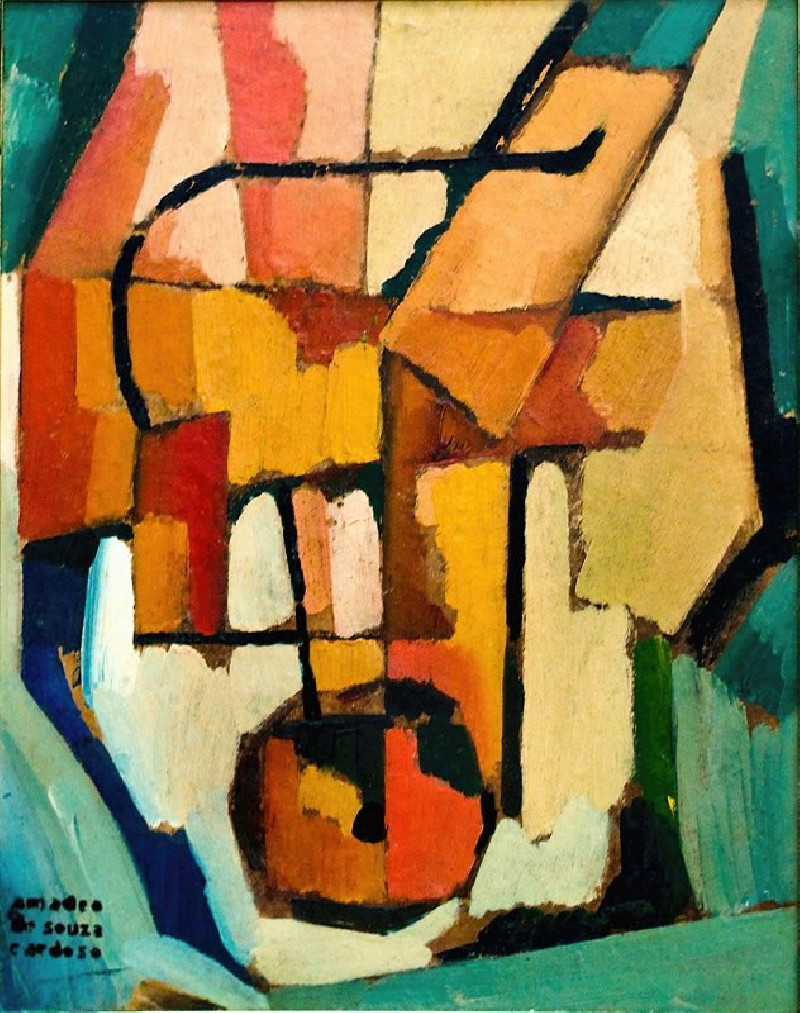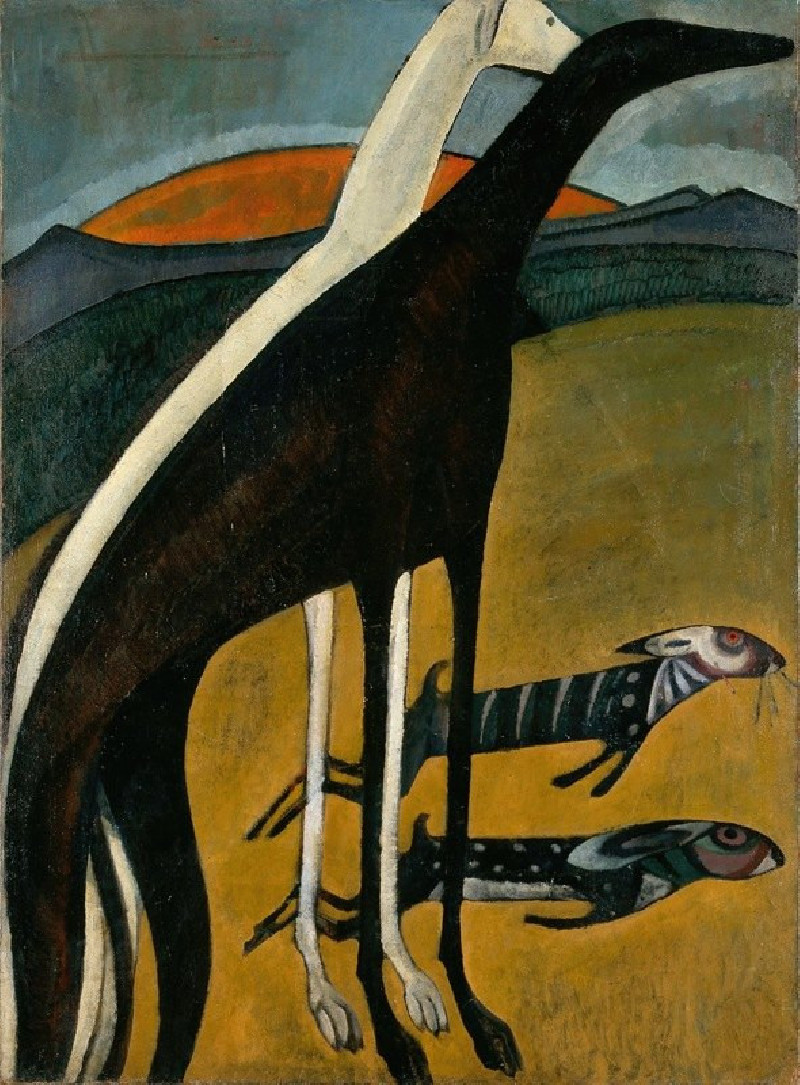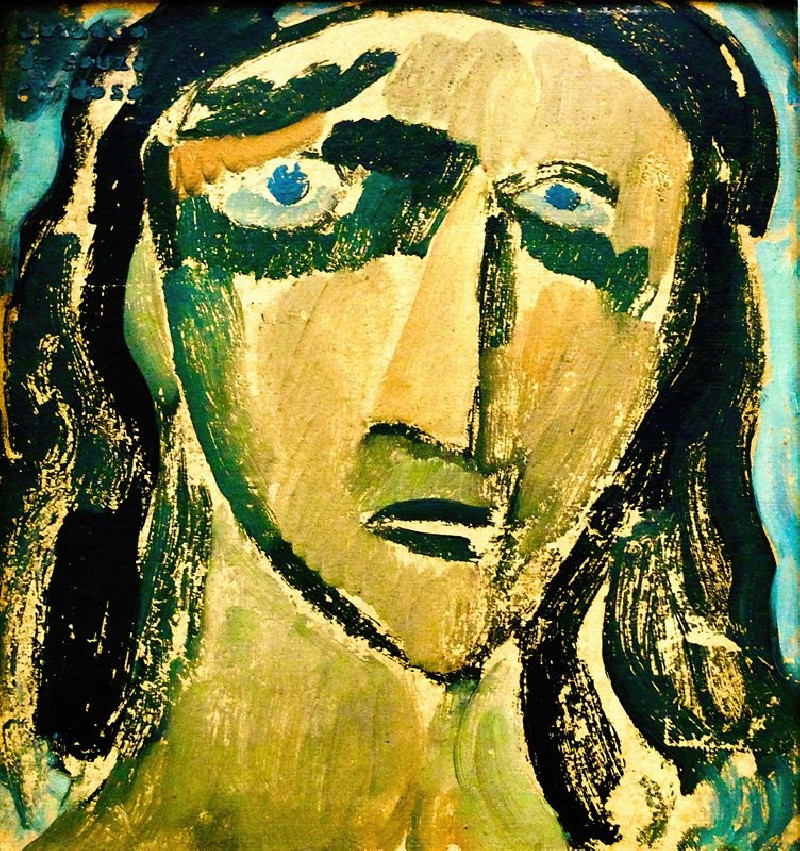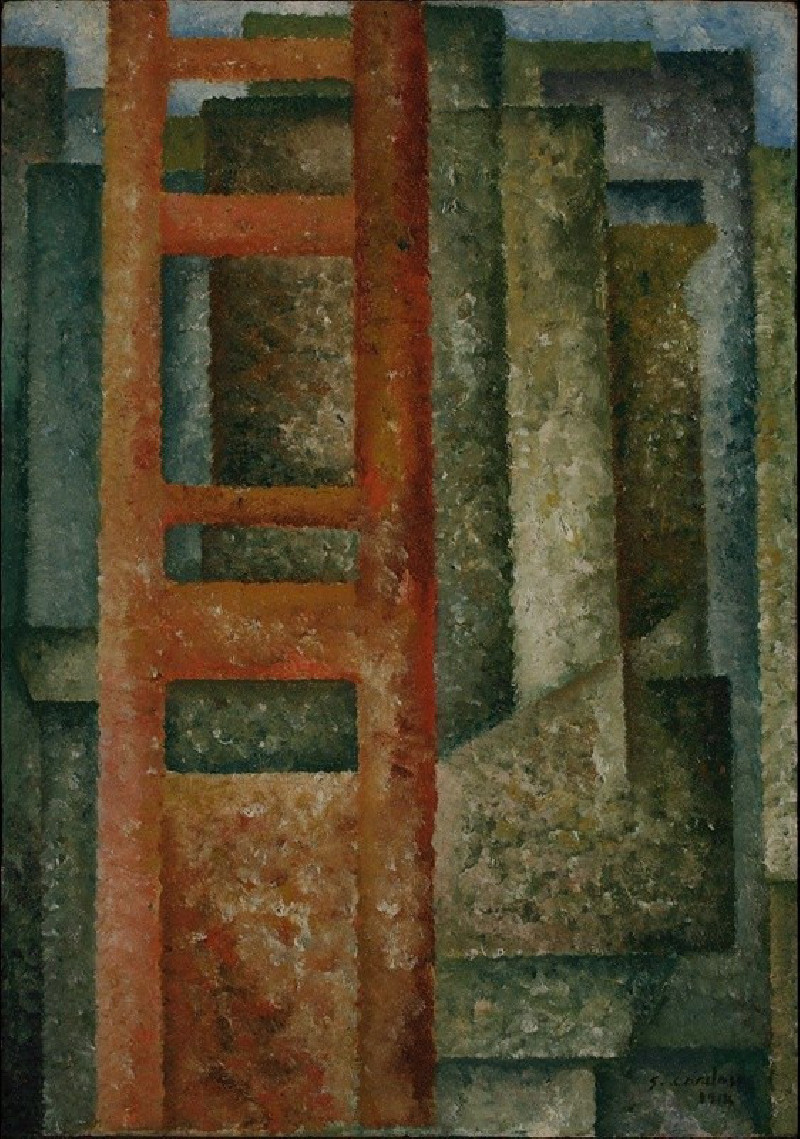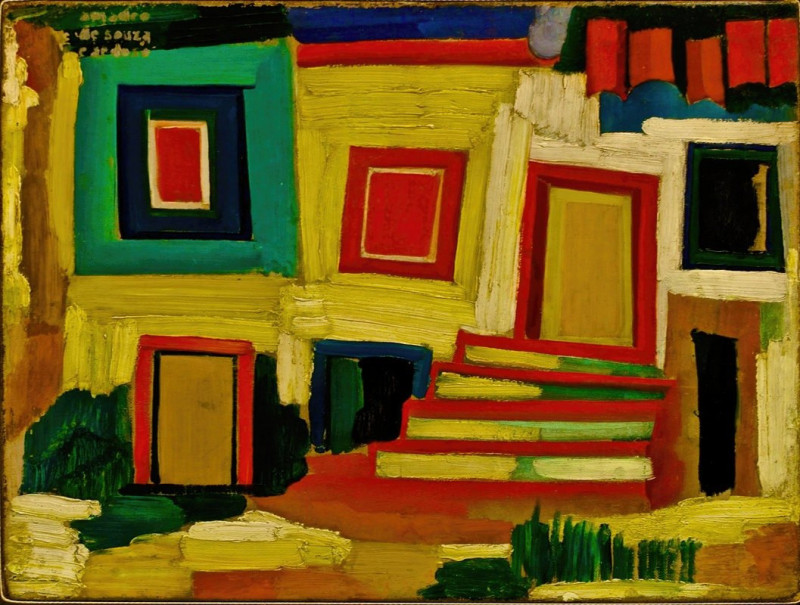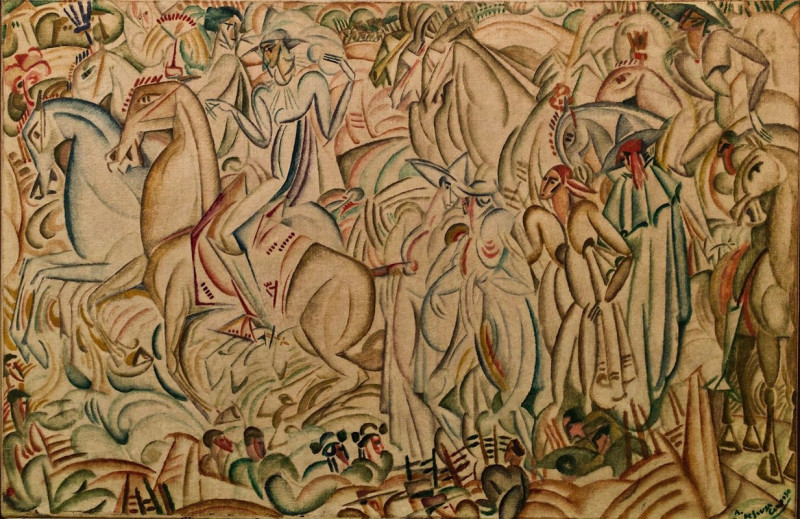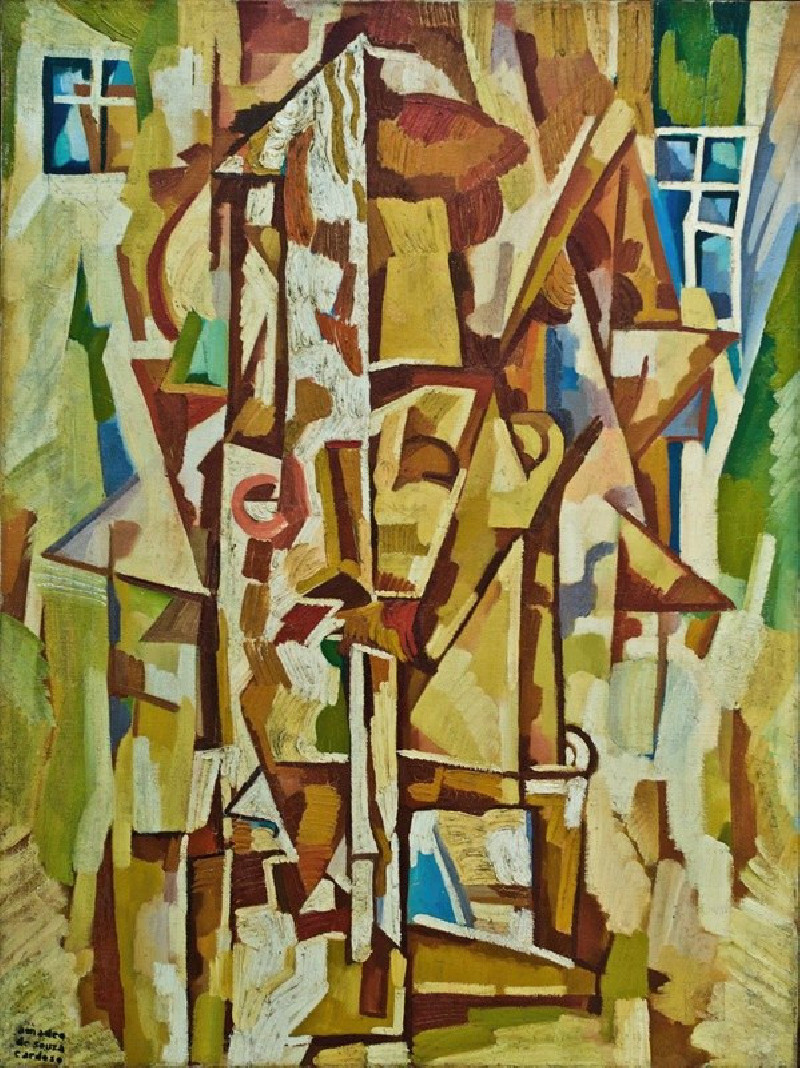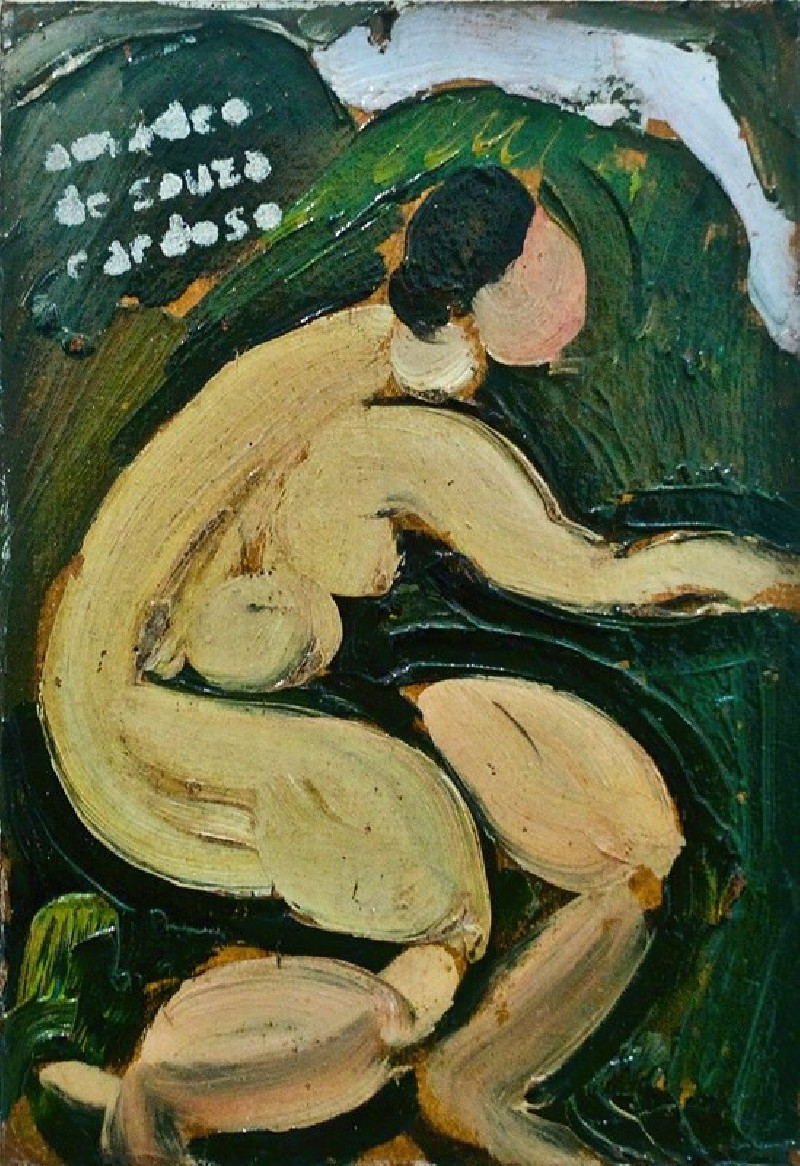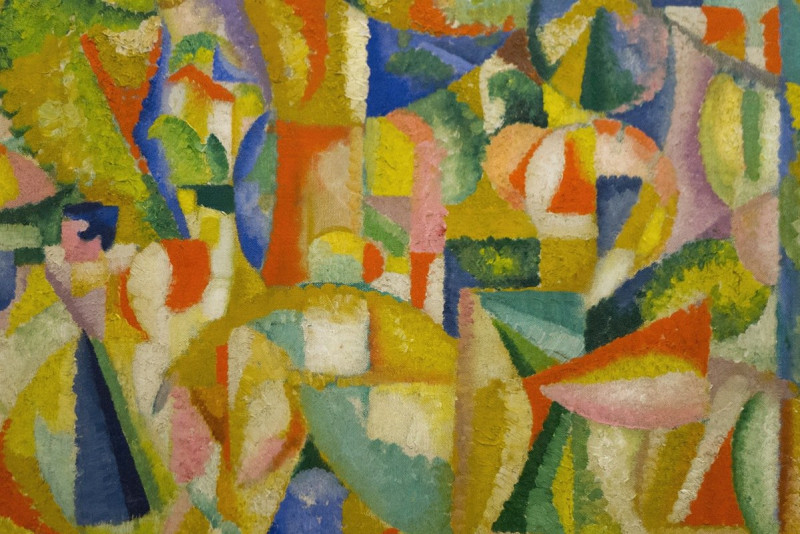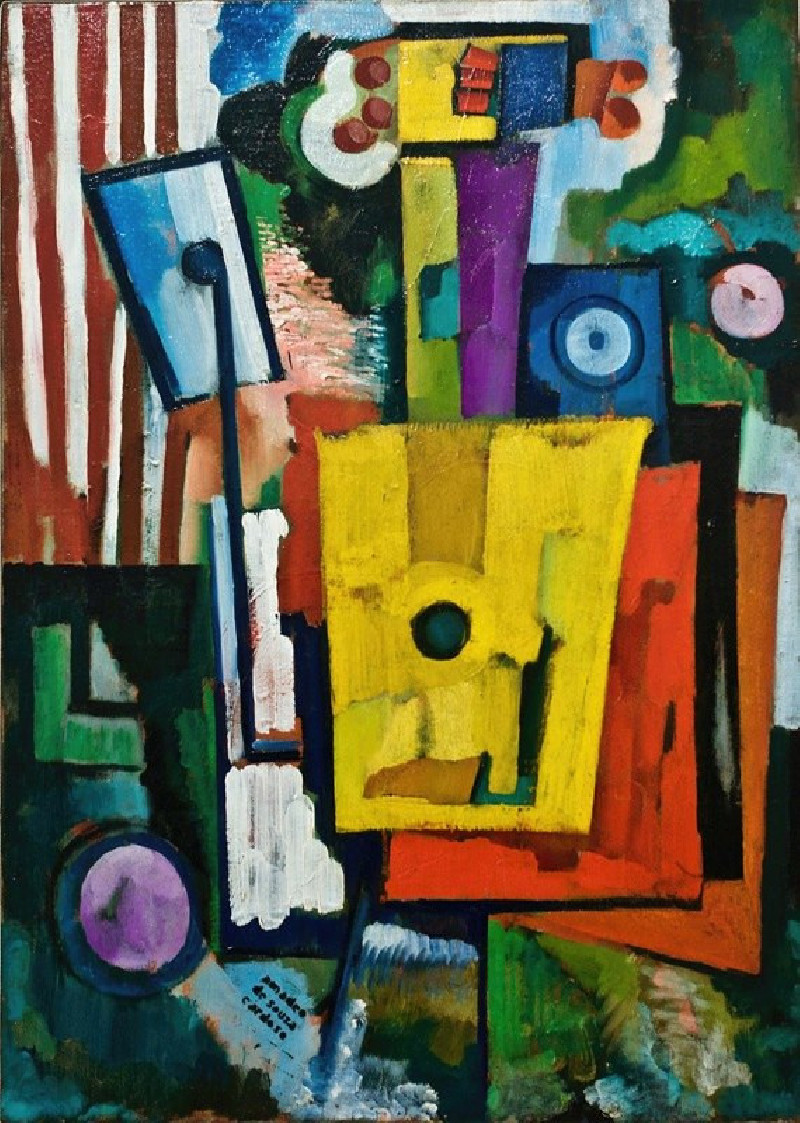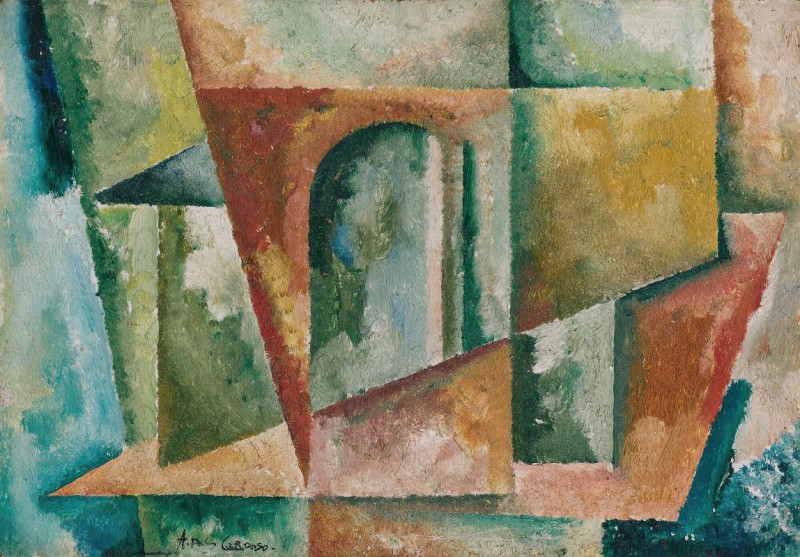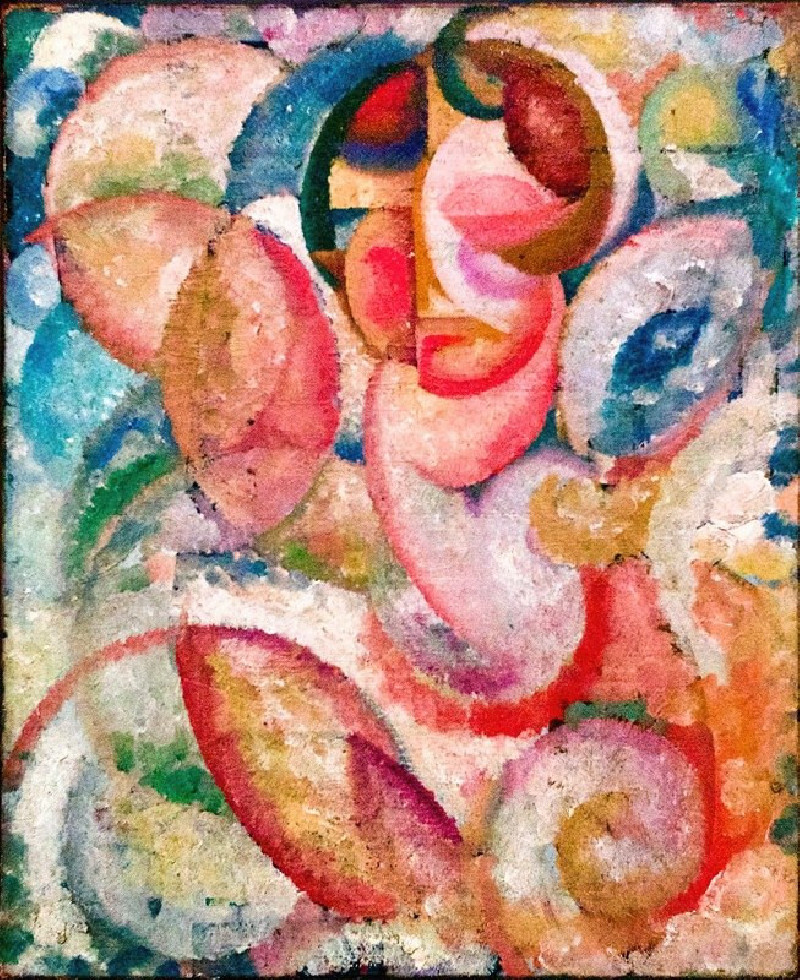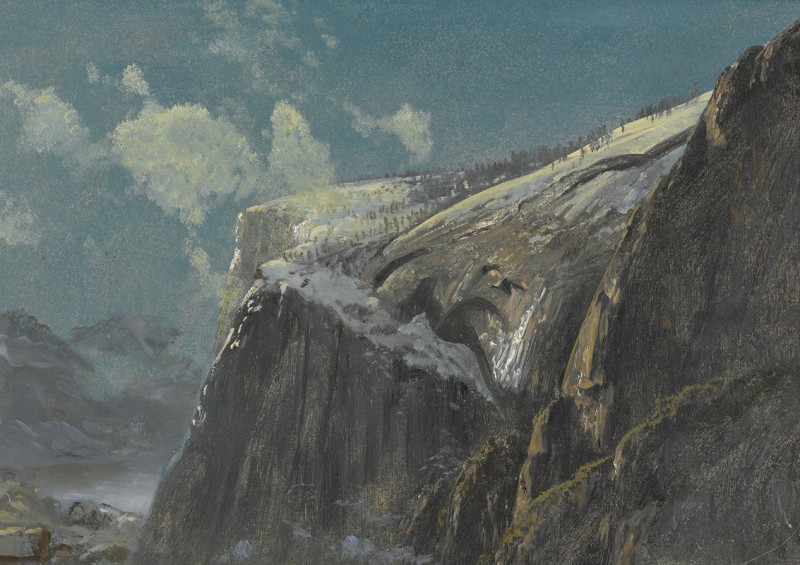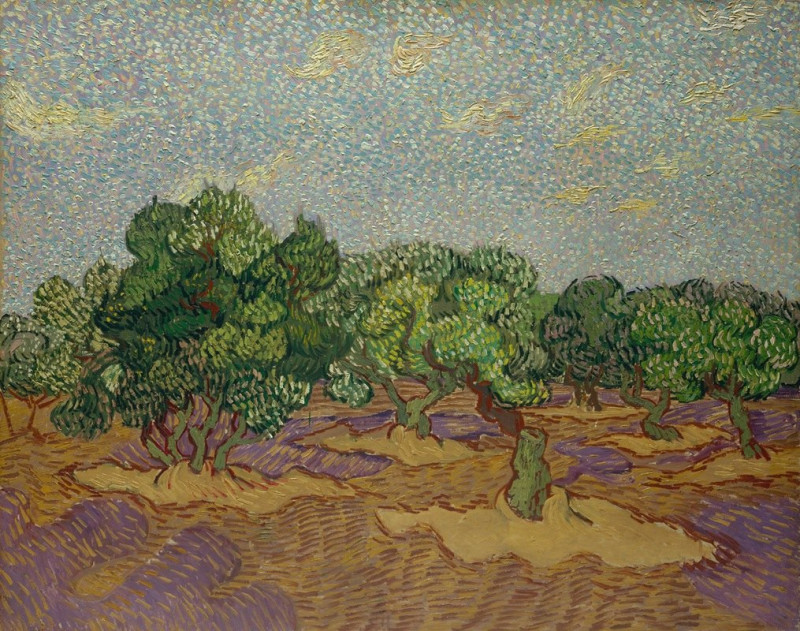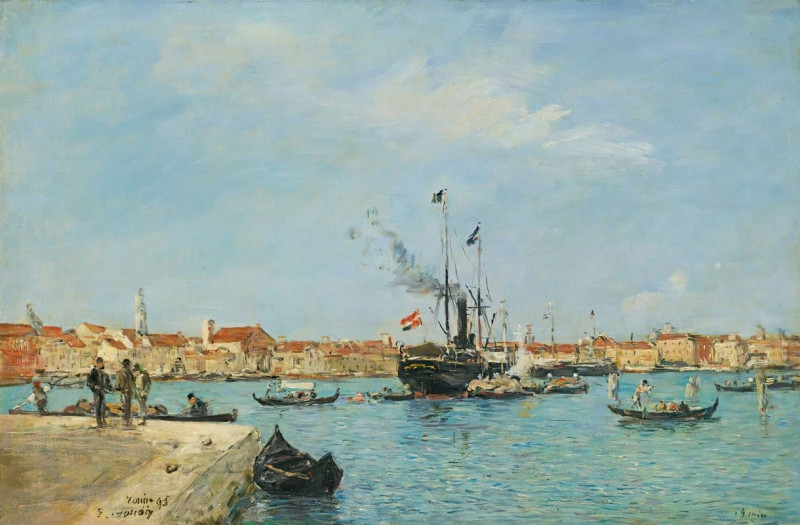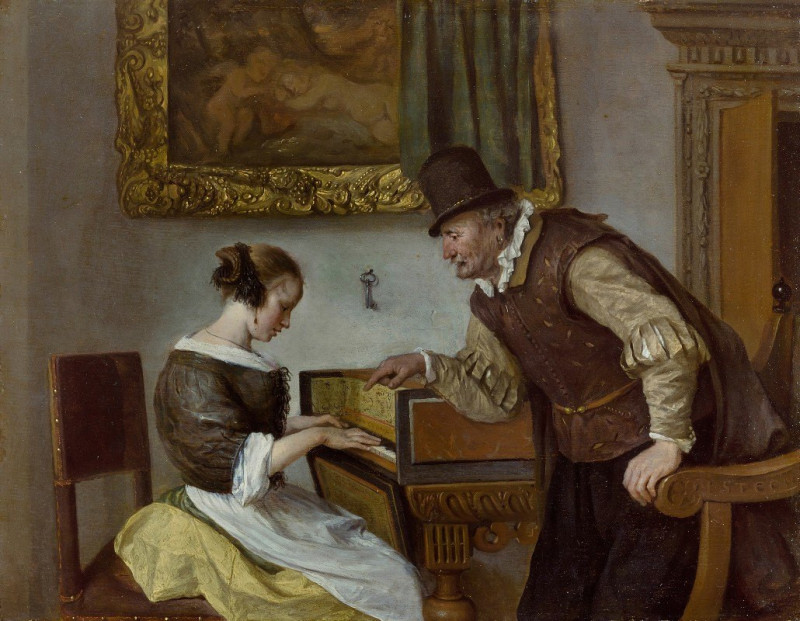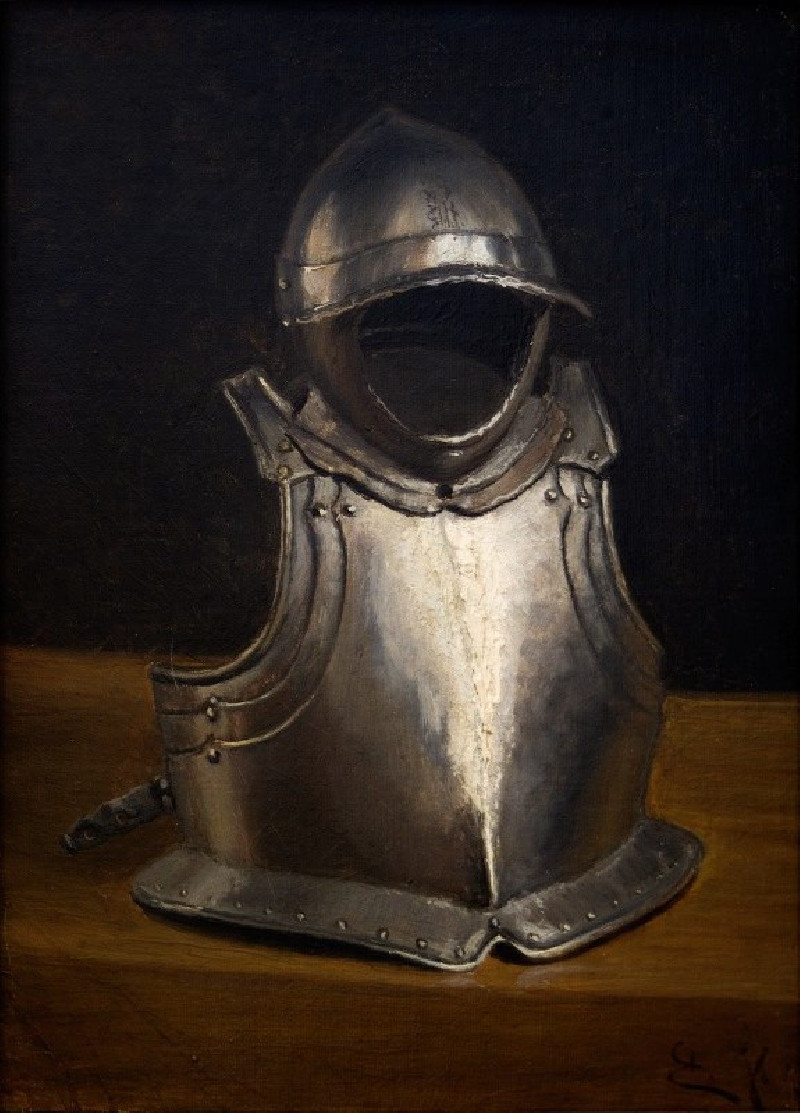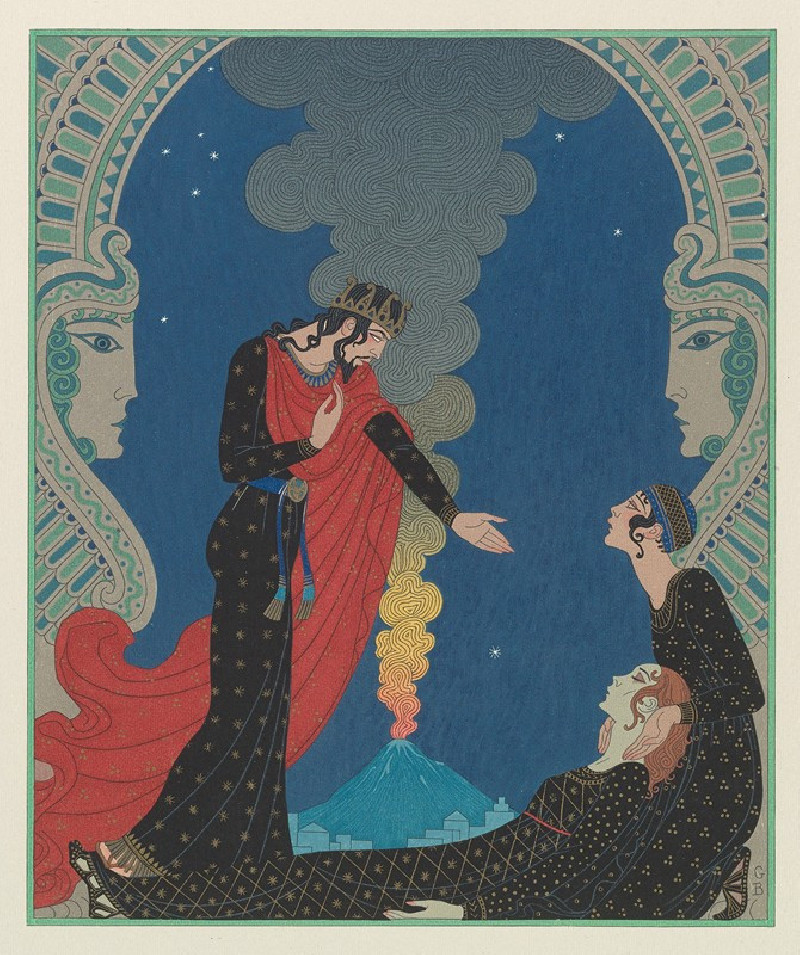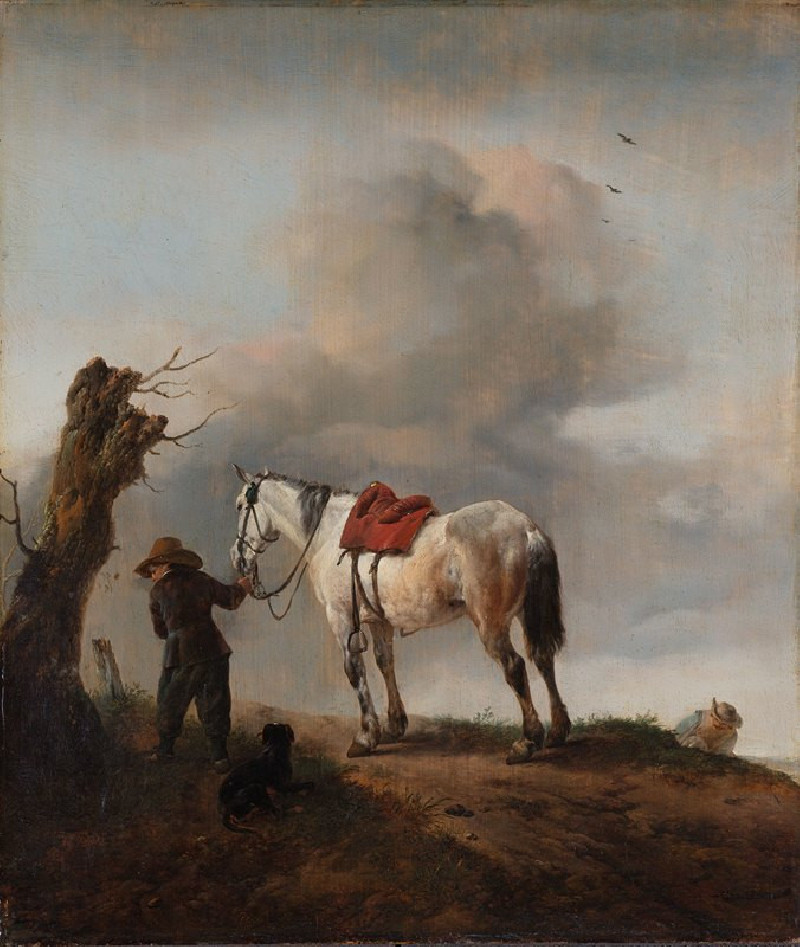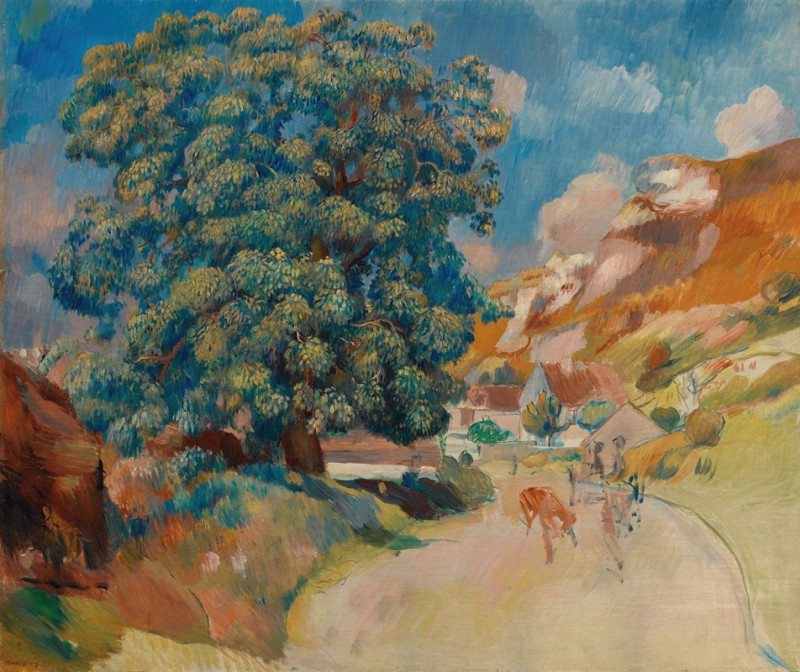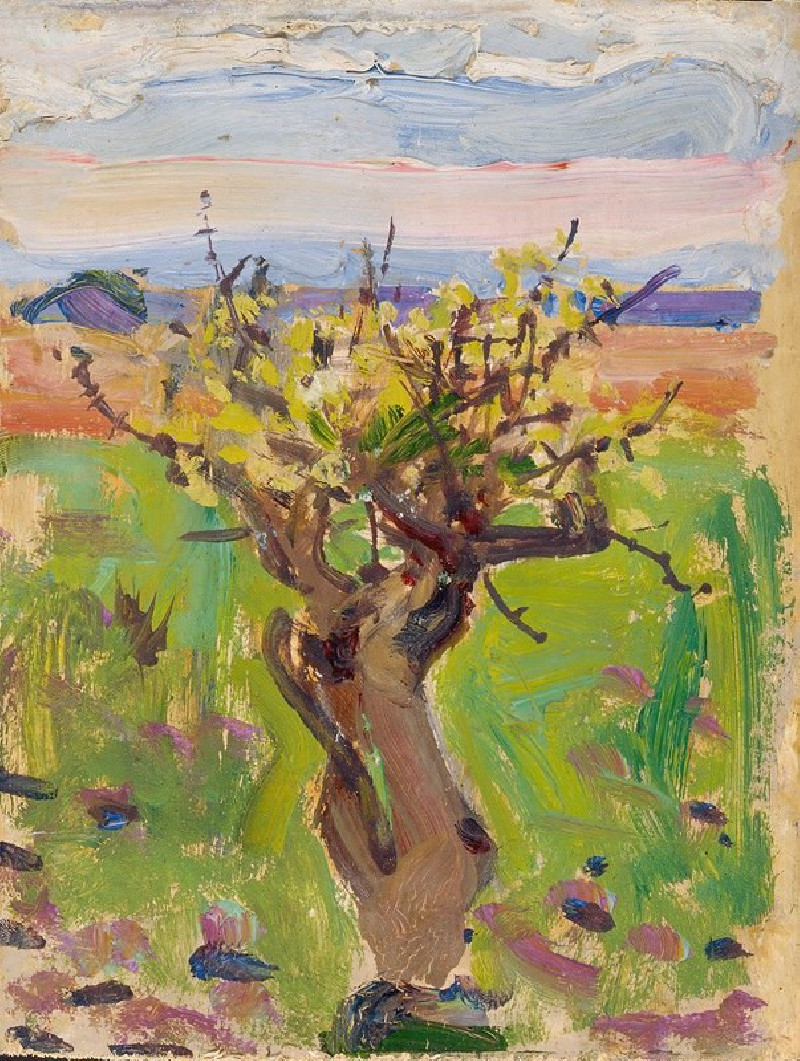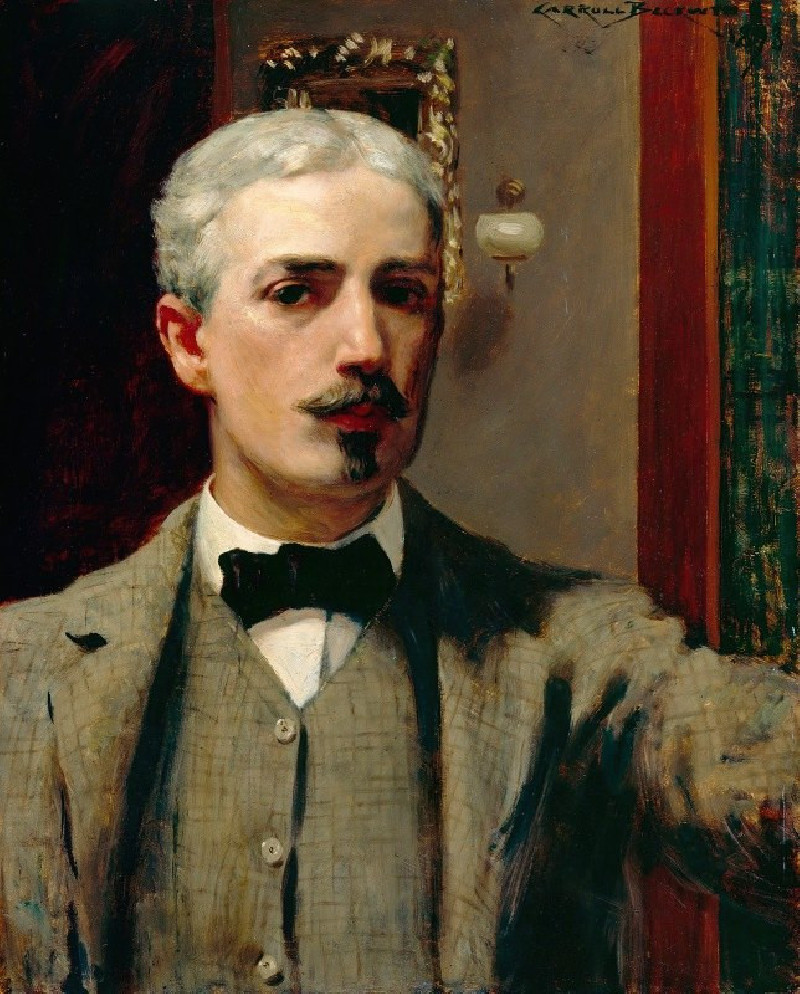Tramélia (c.1914)
Technique: Giclée quality print
Recommended by our customers
More about this artwork
Located at the intersection of explosive color and dynamic form, the painting "Tramélia" epitomizes the adventurous spirit of early 20th-century modern art. Created by the celebrated Portuguese artist Amadeo de Souza-Cardoso around 1914, this artwork reflects his innovative approach to form and composition, which marked him as a pivotal figure in the avant-garde movement."Tramélia" showcases a vibrant palette of reds, yellows, oranges, and contrasting shades of blues and greens, which are cleverly distributed across the canvas in angular, interlocking shapes. Despite its abstract nature, there is a rhythmic balance in the arrangement of these shapes, offering a sense of cohesive, albeit dynamic, equilibrium. The bold, black outlines accentuate the forms, lending depth and definition to the seemingly disjoint segments.The painting's title, "Tramélia," and the composition do not explicitly suggest its subject matter, leaving its interpretation open to viewers’ imagination and insight. Some may see architectural influences, others a blend of organic forms, or a metaphorical representation of the bustling energy and complexity of early 20th-century life.Amadeo's work, often characterized by a bold use of color and hectic, yet methodical composition, draws influence from both Cubism and Futurism, synthesizing a unique and distinctive style. "Tramélia" is a compelling example of how Amadeo broke away from conventional aesthetics to explore the boundaries of abstract art.This piece not only highlights his skill as a colorist but also his ability to communicate complex themes through abstract representations, making it a captivating focal point for reflection and discussion.
Delivery
Returns
Amadeo de Souza-Cardoso (14 November 1887 – 25 October 1918) was a Portuguese painter.
Belonging to the first generation of Portuguese modernist painters, Amadeo de Souza-Cardoso stands out among all of them for the exceptional quality of his work and for the dialogue he established with the historical avant-gardes of the early 20th century.

